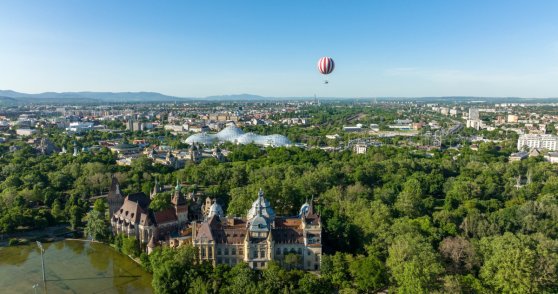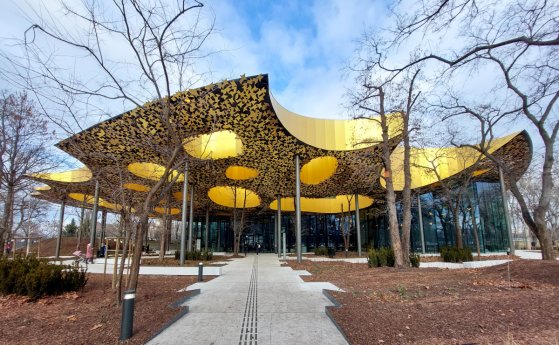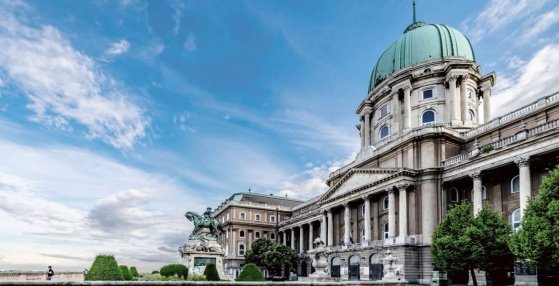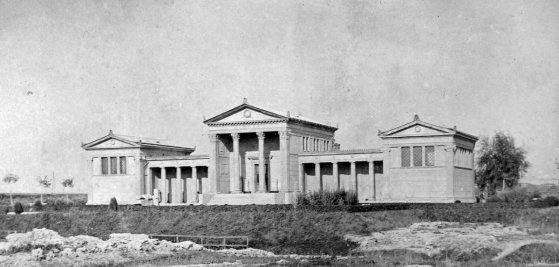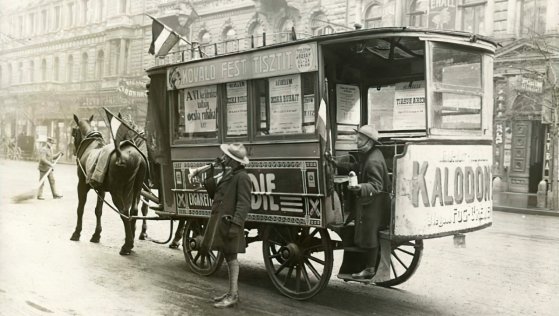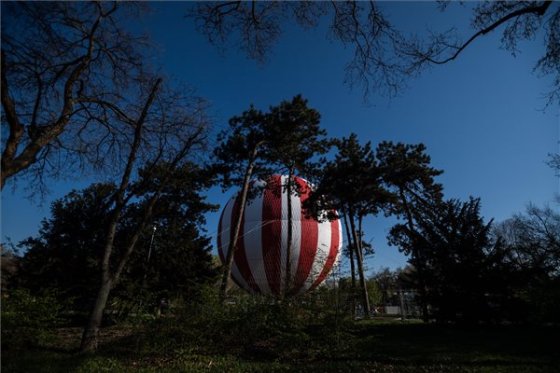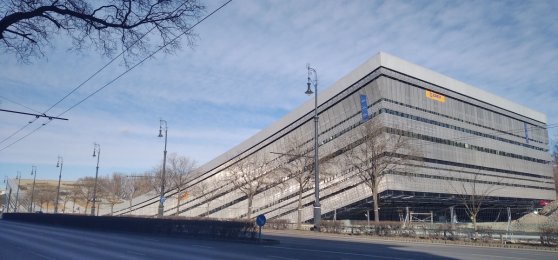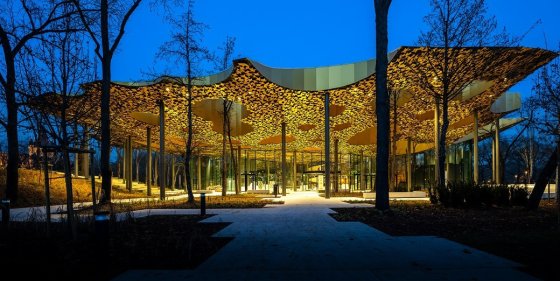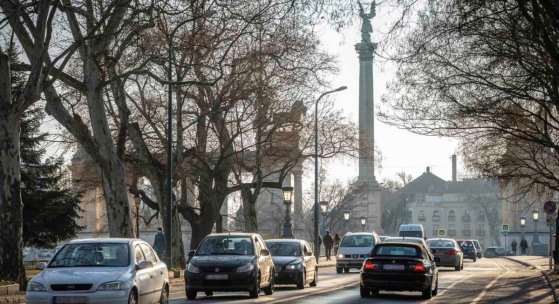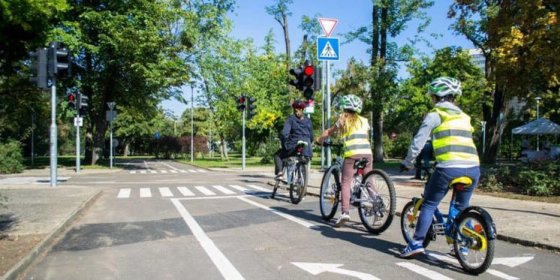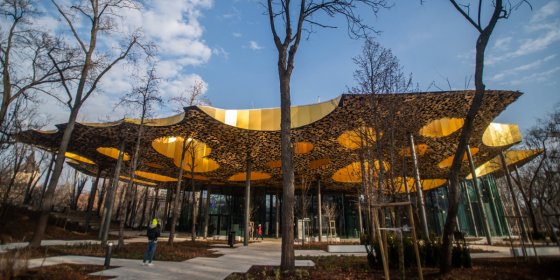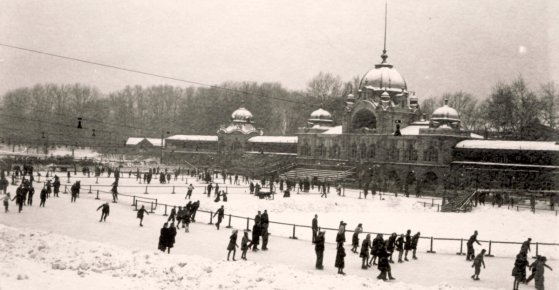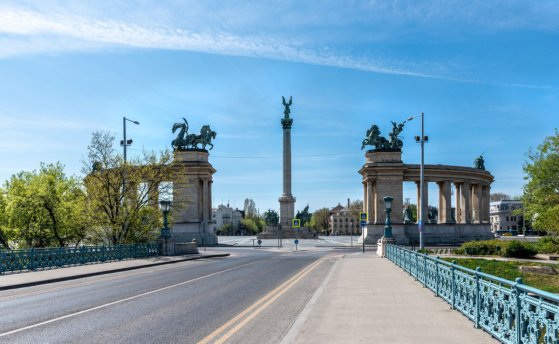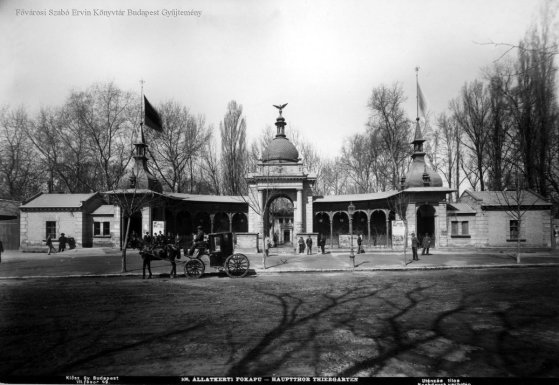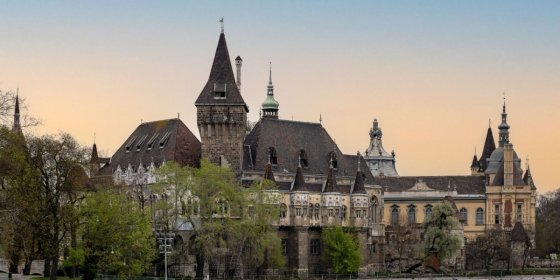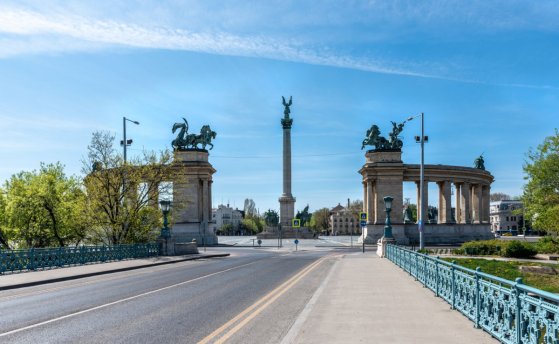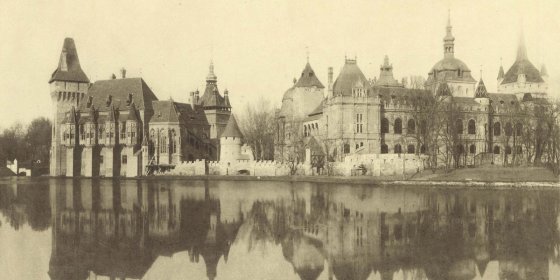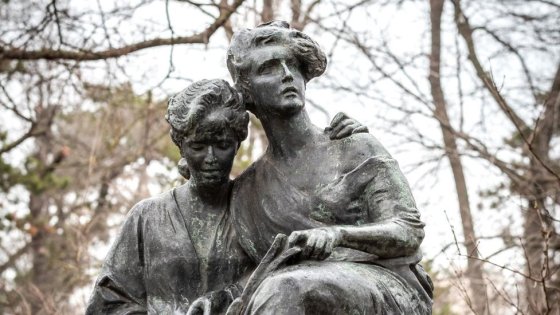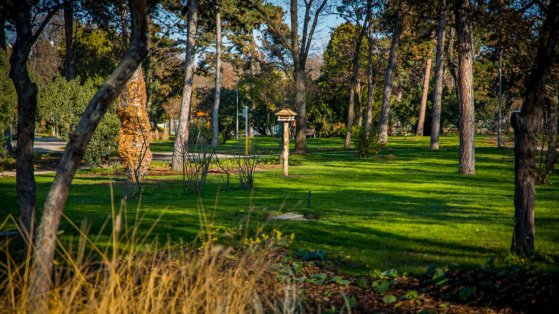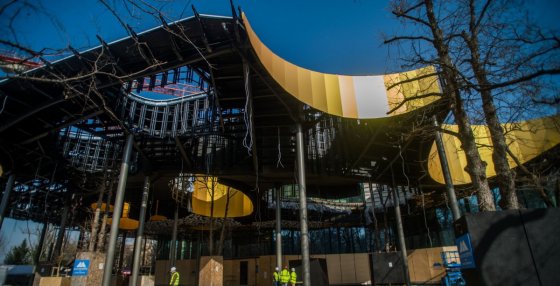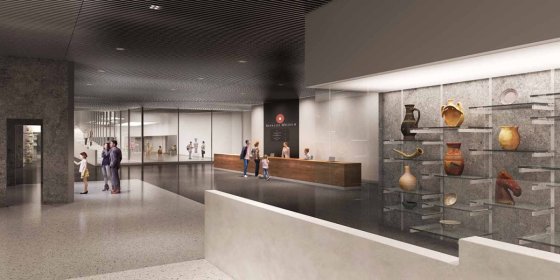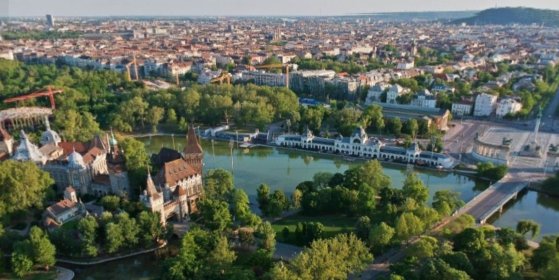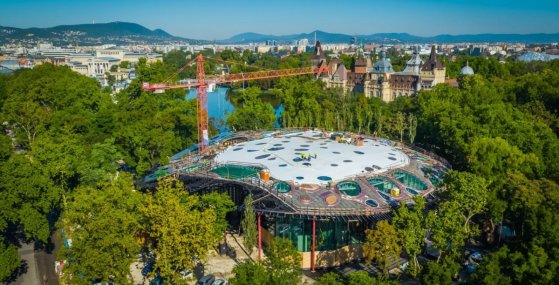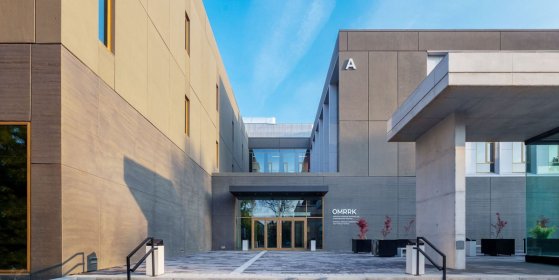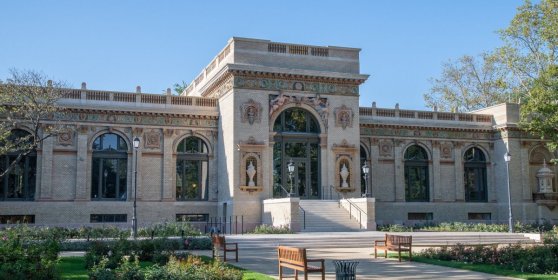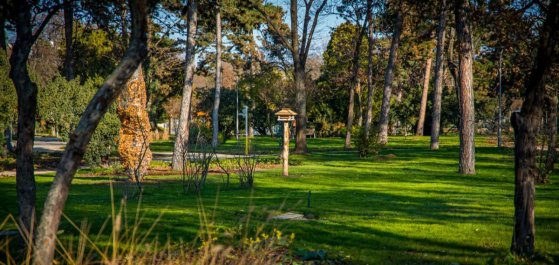 The „intertwined history” of the bridges and the city of Budapest
Which ideas and events have shaped the fate of bridges of Budapest and the cityscape? Alongside many other interesting facts, this question is also answered this newly published book by the Budapest City Archives, which introduces the history of bridges in Budapest.
The „intertwined history” of the bridges and the city of Budapest
Which ideas and events have shaped the fate of bridges of Budapest and the cityscape? Alongside many other interesting facts, this question is also answered this newly published book by the Budapest City Archives, which introduces the history of bridges in Budapest.
City Park
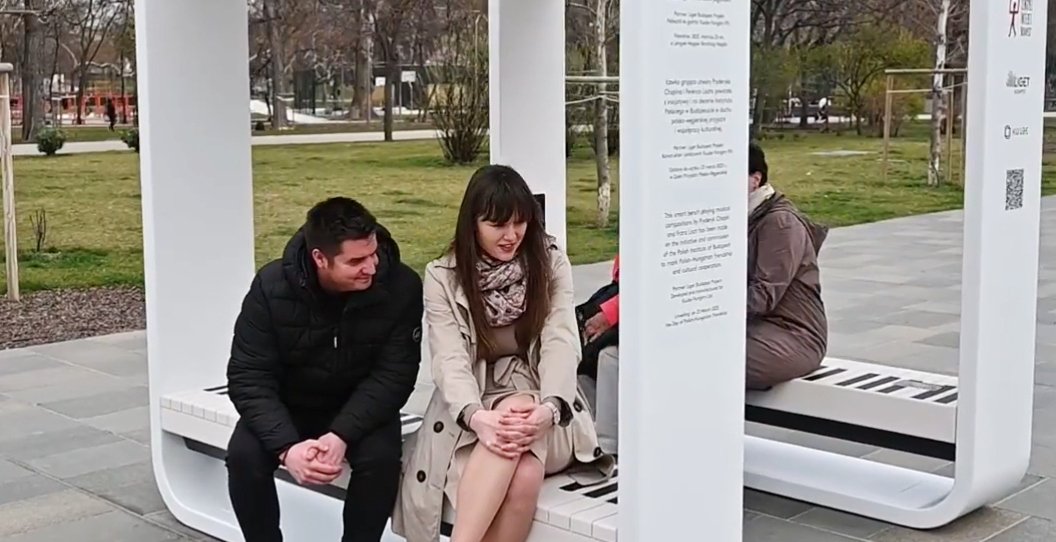 A musical smart bench was handed over in City Park
A musical smart bench was handed over in City Park
March 25, 2023 at 10:30 AM
The City Park promenade has been enriched with a smart bench playing the works of Liszt and Chopin. The musical smart bench was presented to Budapest by the Polish Institute to commemorate the world-famous composers of the two nations.
The renewal of the City Park continues, the new National Gallery is also planned to be built
March 17, 2023 at 1:30 PM
The Liget Budapest project continues with family-friendly developments, in addition to the recreational functions of the park, other green areas are also renewed: this year, the KRESZ park and its surroundings, the section of the Dvorák Promenade between the Museum of Ethnography and the House of Music Hungary, and the area surrounding the balloon observatory will also be renovated. The construction of the new National Gallery is also planned.
From swamp to public park: Donations were requested for tree planting in the City Park 205 years ago
January 19, 2023 at 11:00 AM
Two hundred and fifty years ago, on the site of today's City Park, on the outskirts of the city, there was a swamp and an ox pasture. Although there were attempts to afforest the area, it also happened that the planted saplings were simply nibbled by the oxen. The plans for the development of the Park were completed by 1817, but the money needed for its implementation was lacking. Therefore, 205 years ago, fundraising began for the creation of the public park.
The House of Music Hungary won one of the most prestigious American architectural awards
November 28, 2022 at 10:00 AM
After numerous previous professional awards, the House of Music Hungary has achieved success in America after Europe. The iconic building won one of the world's most prestigious architectural awards, the Design of the Year award.
From the Curia's building to the City Park: the Hungarian National Gallery opened 65 years ago
October 25, 2022 at 10:00 AM
The Hungarian National Gallery is one of the best-known institutions in the country and the capital, which celebrates its 65th anniversary this year. The institution, which collects masterpieces of Hungarian art, opened its doors to visitors on 5 October 1957 in its first home, in the Curia's building on Kossuth Square designed by Alajos Hauszmann, to which the Museum of Ethnography later moved. It occupied its current location, buildings B, C and D of the Buda Castle, in 1975. Within the framework of the Liget Project, the plans for the new home have already been drawn up, although its implementation is still pending.
They collected memories of old times - Budapest founded a museum 135 years ago
October 20, 2022 at 3:00 PM
Budapest's position as the capital provides many advantages but sometimes it also comes with disadvantages. This was also the case in the area of museums: because the Hungarian National Museum was established here in 1807, the capital was able to establish its own institution only eighty years later - after many rural settlements. However, on 20 October 1887 - exactly 135 years ago - the decision was finally made and the Capital Museum was established.
The first horse-drawn omnibus started in Pest 190 years ago - These carriages travelled the streets of the capital for nearly a hundred years
July 1, 2022 at 9:00 AM
The first omnibus, i.e., horsebus, started in Pest on 1 July 1832. It connected two coffee houses, one was in the City Park, the other in the City Centre, the main goal of the business was to increase the turnover of the City Park coffee house. Omnibuses were part of the Budapest street scene for nearly a hundred years.
From the air we will be able to admire the city - a Balloon Lookout opens in Városliget
April 13, 2022 at 2:00 PM
From the beginning of May, we will be able to admire the capital from a hot air balloon rising to a height of more than 100 meters, as the Ballon Lookout will be put into operation on Mimóza Hill in the Városliget, which will be a rarity not only in Hungary but also in Central Europe. The balloon revives an old tradition, as a similar device was already operating in the Grove during the 1896 millennium celebrations.
The new Museum of Ethnography will be handed over in the spring
February 6, 2022 at 9:00 AM
There have been huge changes in City Park recently that are not over yet. The huge car park behind the Kunsthalle (Műcsarnok) has been occupied by an impressive building, the new Museum of Ethnography. It attracts attention not only with its sheer size but also with its shape - all while respecting the park nature of its surroundings. In the spring, anyone will be able to go up to the top of the building, but for the time being, only a few of those interested had the opportunity to do so.
The House of Hungarian Music has opened in City Park
January 22, 2022 at 7:00 PM
On the occasion of the National Day of Hungarian Culture, the House of Hungarian Music, completed within the framework of the Liget Budapest Project, was ceremoniously handed over in City Park. The new institution, which opened in a special building, awaits the public from 23 January 2022 with interesting music programs, an exciting and interactive permanent exhibition of music history, and a three-day program series next weekend.
The busiest road in Városliget will be turned into a promenade
January 21, 2022 at 7:00 PM
Instead of an asphalted highway, the Károly Kós promenade, which cuts the Városliget in two, will be turned back into a real park walkway, the tender for the reconstruction plans was announced today by Városliget Zrt. In addition to peak hours, the Zoo Tour will also be closed to traffic during peak hours, and Heroes' Square will be car-free in the future.
The transport park in Városliget will be renovated
January 20, 2022 at 7:00 PM
The KRESZ park in Városliget will be expanded and renovated within the framework of the Liget Budapest Project. In the park, where children can playfully learn the basics of safe transport, there will be a transport-themed playground and more green space.
The imposing building of the Hungarian House of Music in Városliget has been completed
December 16, 2021 at 6:00 PM
The House of Hungarian Music was built in Városliget. Opening on 22 January with an interactive music history exhibition, the building will have a triple function: hosting concerts, dance halls and community music, providing space for education and music pedagogy, as well as interactive permanent and temporary exhibitions, a sound field and a creative sound space.
There has been artificial ice on the City Park Ice Rink for 95 years
November 20, 2021 at 5:00 PM
95 years ago today, on 20 November 1926, the mechanically cooled skating rink in City Park was handed over. Thanks to the artificial ice, the season has been extended, allowing ice skating even when the temperature does not drop below zero degrees. The one in City Park was the first artificial ice surface in the country and the second in Europe.
The Memorial Stone of Heroes was torn down 70 years ago
August 26, 2021 at 11:00 AM
In the shadow of the Millennium Monument, another work is hidden in the Heroes' Square. The Memorial Stone of Heroes symbolises a mass grave, originally erected in 1929, in memory of the soldiers of the First World War resting in anonymous graves, but it was not mourning that was its primary message, but mobilisation against the changing millennial boundaries. The memorial stone was demolished in 1951 but re-erected in the spring of 1956 and then in 2001, in a different form and with new messages.
Parking garages are being built on Mexican Road for the car-free City Park
August 10, 2021 at 7:00 PM
The creation of the car-free City Park will be facilitated by the P + R car parks to be built at the Mexican Road terminal of Kisföldalatti, the design contract of which was signed today by the Budapest Development Centre and the winner of the tender, Középülettervező Zrt. The creation of parking garages is integral to the renewal of transport in the area.
The Pest Zoo opened in the City Park 155 years ago
August 8, 2021 at 11:30 AM
People have always been curious about special, exotic animals: the stuntmen who appeared in Pest-Buda in the 18th century and travelled with an army of animals have always enjoyed great popularity. However, the real zoo had to wait a long time: it opened its doors on 9 August 1866. The beautiful park quickly became popular among the citizens of Pestbuda, where they could see kangaroos, parrots and reindeers. Giraffes did not arrive at the Zoo until 1868, through the intervention of Queen Elisabeth (Empress Elisabeth of Austria).
Vajdahunyad Castle was rebuilt for The Museum and Library of Hungarian Agriculture, founded 125 years ago
July 27, 2021 at 9:00 AM
Vajdahunyad Castle, located on the former Széchenyi Island of the Városliget Lake, has been very popular since 1896. With its special appearance and unique atmosphere, it attracts tens of thousands of visitors. Walking between its walls and characteristic parts of the building, one can travel a long way in time and space from the Highlands to Transylvania, from the Romanesque to the Baroque period. And the walls hide one of Europe’s largest agricultural collections and museums, celebrating its 125th anniversary this year.
Next steps for a car-free City Park – Planning of the new Pest overpass begins
May 3, 2021 at 4:00 PM
Another milestone towards a car-free City Park has been made. The Budapest Development Center has signed a contract to design a new overpass in Pest over the Rákosrendező railway station. It has also announced a public procurement procedure for designing a P+R car park to be built at the Mexikói road underground station.
Celebrating the millennial past of the Hungarian nation
May 1, 2021 at 4:00 PM
The central event of the millennium celebrations of 1896, held on the anniversary of the Hungarian Conquest of the Carpathian Basin, was the National Millennium Exhibition held in City Park. The exhibition, which was open for half a year, offered insight into the past of Hungarians and provided an opportunity to present the results achieved during the extraordinary economic development after the Austro-Hungarian Compromise.
Jókai's loyal readers - Reading Girls, a statue by Alajos Strobl to return to Jókai Square
April 16, 2021 at 9:30 AM
Not only books, but sculptures also have their own destiny – this is what comes to mind when looking at the plans for the renovation of Jókai Square in Terézváros. In the shadow of Mór Jókai's sculpture erected in 1921, a smaller work appears, which may be familiar to many from among the trees of Városliget. The statue of the Reading Girls was originally intended by the creator Alajos Strobl as a side figure of the Jókai statue in Jókai Square but was never erected on the square. The Reading Girls statue was erected in 1929 but will now be moved from Városliget to its originally intended location.
Rondo to be restored amid continuing works in City Park
March 22, 2021 at 3:00 PM
Városliget Promenade will be rebuilt. The Rondo, the historical entrance of City Park, will be restored, and a new part of the park will be created between the House of Hungarian Music and the new Museum of Ethnography. Almost 80,000 square metres of green space will be renewed, and 200 new deciduous trees planted by the spring of 2022. In addition, hot air balloons will once again rise from Mimóza Hill in City Park.
House of Hungarian Music to open before Christmas
February 27, 2021 at 6:00 PM
The construction of the House of Hungarian Music in City Park has entered its final stage. To commemorate the occasion, a time capsule was placed in the centre of the building. The institution will open its doors to the general public before Christmas this year.
Short film showcases new permanent exhibition of Museum of Ethnography
February 3, 2021 at 9:00 AM
The new building of the Museum of Ethnography on the edge of City Park will open its doors in 2022. For this special occasion, the institution is creating new permanent exhibitions. The museum has just released a few-minute-long short film showcasing the preparations and offering a look behind the scenes.
Cars to be barred from City Park – Heroes Square to become pedestrian zone
January 8, 2021 at 7:00 PM
Officials announced that plans to create a car-free City Park are being prepared. A new overpass will be built above the Rákosrendező railway station to connect Zugló and Angyalföld. A new P+R car park, with 1500 spaces, is to be built at the terminus of the Millennium Underground at Mexikói Road.
CNN lists House of Hungarian Music among most anticipated buildings of 2021
January 5, 2021 at 6:00 PM
CNN has listed the House of Hungarian Music being built in City Park as one of the most anticipated buildings of 2021 globally. The structure will serve as a museum, event venue and educational centre.
National Restoration and Museum Storage Centre opens
December 15, 2020 at 2:00 PM
Relocation of artefacts and works of art is already underway. The construction of the modern restoration workshops has been completed, and work has begun in the newly established National Restoration and Museum Storage Centre, in which more than three hundred thousand artefacts will be preserved.
Millennium House receives prestigious architecture award
December 4, 2020 at 10:00 AM
Millennium House has received prestigious recognition at the Hungarian Real Estate Development Awards. The renovated cultural institution – one of the oldest buildings in City Park was named best development in the culture category of the awards.
Botanical Garden in City Park opens
December 2, 2020 at 2:00 PM
Renovated botanical garden, a new dog park, and the two-kilometre-long, illuminated running track have been opened in City Park. With this, more than 150,000 square metres of green space has been revitalized during the development of the park.
Exhibition of aerospace history opened in Petőfi Csarnok 35 years ago
October 20, 2020 at 9:00 AM
The upper floor of the Petőfi Csarnok housed the Aviation and Space Exploration exhibit of the Transport Museum for thirty years. The aeroplane used by Charles IV in his attempt to return to the Hungarian throne in 1909 and was on display, as was the World war I reconnaissance aircraft manufactured by the Lloyd factory in Aszód. Relics of the space age included the crew capsule used by Bertalan Farkas and Valeri Kubasov to return to Earth from the Salyut-6 space station. When the Petőfi Csarnok was closed, the exhibition was also forced to leave.
More articles
 The „intertwined history” of the bridges and the city of Budapest
Which ideas and events have shaped the fate of bridges of Budapest and the cityscape? Alongside many other interesting facts, this question is also answered this newly published book by the Budapest City Archives, which introduces the history of bridges in Budapest.
The „intertwined history” of the bridges and the city of Budapest
Which ideas and events have shaped the fate of bridges of Budapest and the cityscape? Alongside many other interesting facts, this question is also answered this newly published book by the Budapest City Archives, which introduces the history of bridges in Budapest.
 The Bridge Report, which brought a turning point in the history of Budapest
A travel report that changed the history of Pest and Buda, as well as Hungary. The little book contributed to the change of half a thousand years of legal customs and the implementation of an investment of unprecedented size and technical quality. This book was The Bridge Report [Hídjelentés in Hungarian].
The Bridge Report, which brought a turning point in the history of Budapest
A travel report that changed the history of Pest and Buda, as well as Hungary. The little book contributed to the change of half a thousand years of legal customs and the implementation of an investment of unprecedented size and technical quality. This book was The Bridge Report [Hídjelentés in Hungarian].
 Drama on the university wall - The heroic monument was planned 95 years ago
In the constant hustle and bustle of the Egyetem Square in Pest, the students may not even notice the monument that decorates the short section of wall between the church and the central building of ELTE. However, it commemorates their predecessors, the heroes who fought for their country in World War I, and those who heroically helped them. The first design of the dramatically collapsing soldier was born in 1928, ninety-five years ago.
Drama on the university wall - The heroic monument was planned 95 years ago
In the constant hustle and bustle of the Egyetem Square in Pest, the students may not even notice the monument that decorates the short section of wall between the church and the central building of ELTE. However, it commemorates their predecessors, the heroes who fought for their country in World War I, and those who heroically helped them. The first design of the dramatically collapsing soldier was born in 1928, ninety-five years ago.

